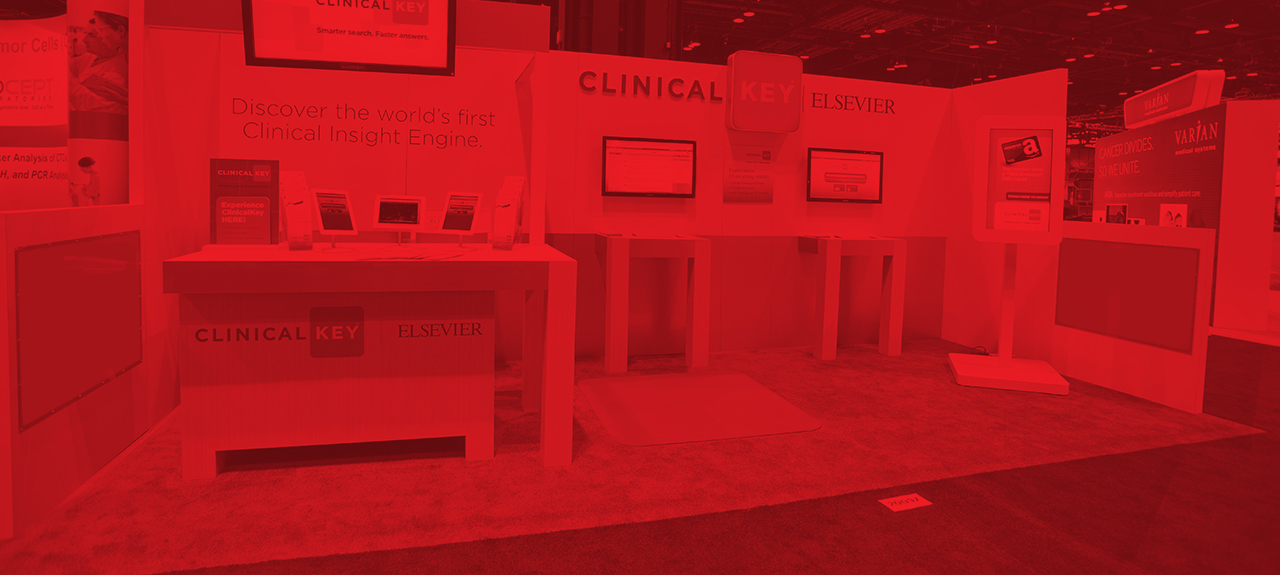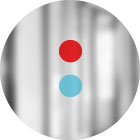You’re mere months away from an industry trade show or event, and this year your team is determined to stand out from other brands – even the big ones. In an over-stimulating environment like NACS, Comic Con or Shopper Marketing Expo, what measures can you take to get your space noticed? Is it the incorporation of shiny new toys? Should you start reading up on the power of color psychology (red gets you noticed … but most people prefer blue)? The latest technology?
The truth is, standing out at a trade show is not so cut and dried. There are no real rules to follow for your design. And there are no guarantees of customer engagement. But what we’ve learned from our experiences with clients is that while budget may guide your plan, it doesn’t have to limit your chance for success.
You may not always have the most spectacular design, but with any size budget your brand can stand out at a trade show. We know because we’ve made it happen. Whether you’re working with $10,000 or $1,000,000, it’s essential to include the following practices into your trade show booth.
1. Provide a value exchange
Switch starting working with Lion Forge Comics when it was a brand new company, so its name and branding weren’t familiar to most Comic Con attendees. As such, Lion Forge was particularly hungry for contact info so it could report updates on any movement in the business. Our solution was to create and promote a simple slot machine-esque game of chance.
People migrate to giveaways, especially when there is a game aspect to it, because the stakes are higher and the prizes are usually better. In contrast to the cheap key chains and pens on display in most of the booths, Lion Forge’s giveaways were in high demand. They ranged from branded tote bags to tablets – so visitors were more than willing to exchange their contact information for a chance to win.

With the growing popularity of registering visitors and assigning badges, it’s becoming even easier to expand upon a customer database. Radio-frequency identification (RFID) technology simplifies the process to a simple barcode scan, leaving brands with more time to engage with visitors instead of collecting information.
2. Make messaging your priority
There is a tight window for audience engagement on the trade show floor, so it’s critical to plan what you most want to convey about your brand. Messaging needs to be succinct enough to get the idea across, but intriguing enough to ignite a connection.
For ClinicalKey, an innovative clinical resource from Elsevier, we knew it would be a challenge to quickly communicate the product’s application and advantages at the Medical Library Association Trade Show & Expo. We developed messaging that invited medical professionals to “Discover the world’s first Clinical Insight Engine.”

Once drawn in, visitors need a reason to linger and learn about your brand or product.
Without an engagement plan, all the creativity, labor and cost going into the cost of a booth will be lost. In the case of ClinicalKey, we trained brand ambassadors to be well informed of the product and the target audience’s needs.
Whether at a buttoned-up healthcare conference or at an energetic, vibrant trade show like Comic Con, our client’s success hinges on knowledgeable brand ambassadors who are ready to strike up a conversation and answer any product-related question thrown at them.
3. Follow up with your consumers
As someone who hesitates to volunteer my email address to corporations, I can see why clients often struggle to leverage their customer database in a meaningful way. You don’t want to be a nuisance to customers. But if you don’t take action, you could destroy any momentum you’ve built up.
Referring back to ClinicalKey, when we initially started showcasing Elsevier’s product, it was still in beta, but that did not hinder efforts to build a contacts database of medical professionals. Through email communication, we invited them to participate in the beginning stages of ClinicalKey. Once the product was available for public use, we altered follow-up communication to be more sales-oriented.
The people who have an interest in your brand will want to be one of the first to know about an emerging product line, customer perks or opportunities for future engagement. It’s pointless to accrue a customer database if you aren’t making a strategic effort to follow-up with your fans. Just remember to respect their inbox space.
The most effective way for brands to stand out is to connect with visitors. Resonate with them in a way that transcends their typical trade show experience. They’ll remember your brand long after they’ve lost their SWAG bag of stress balls, magnets and pens.














